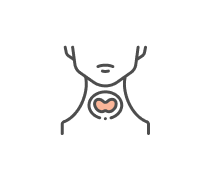When pathogenic bacteria bind to macrophages, they enter the cell by...
The ______ comprise the hydrophilic region of biological membranes.
In the peripheral nervous system, the neuronal dendrites and cell...
All three types of RNA exit the nucleus through:
Two solutions are separated by a membrane that contains only channels...
The three-dimensional shape (tertiary structure) of a protein results...
In compact bone,
The rope-like extracellular protein that gives skin and fibrocartliage...
Like myosin in muscle movement, kinesin, which drives fast axoplasmic...
The role of histones is to:
The resting membrane potential results primarily from which of the...
Kinesin is a(n) ________ that moves _______ along ______.
There is a mutation in mice called dyspedic where the animal lacks...
In comparison to eukaryotes, prokaryotes lack:
Gullian Barre syndrome is an autoimmune disease that attacks and...
The movement of membrane proteins in axons occurs in _______ on...
Which of the following BEST describes the difference between exocrine...
Action potentials propagating toward the central nervous system carry:
Signaling of GnRH to gonadotropes is an example of which of the...
If a tumor is classified as a carcinoma, you can conclude that the...
An action potential:
Potentials initiated in a 5-centimeter long neuron that contains only...
Voltage-gated Na+ and K= channels are clustered at the ____ of the...
Following a bad cut in the skin, a scar will often form. A scar is...
Which of the following is covalently linked to an amino acid before it...
In compact bone, the connective tissue cell type found in concentric...
Just after an action potential reaches its peak (the point where the...
Keratin, which is found in keratinocytes is a(n):
A protease, whose effect is to remove the "ball and chain" on the...
In the capillaries in the brain, you would expect _______ between...
The ribose molecules in RNA are linked one to another by:
Which of the following is (are) true for action potential generation...
Intracellular receptors require which of the following domains?
The signal peptide that emerges from the large ribosomal subunit:
In a postmortem study of a spinal cord you find degeneration of...
Which of the following is not released by cells in the anterior...
Tunicamycin is a drug that prevents the early stages of protein...
There is a toxin produced by a fish-hunting snail that blocks...
At chemical synapses, ____ primarily dictates the postsynaptic...
Integration at synapses occurs when:
In the anterior pituitary, hormones are translated (in) on:
During the synthesis of kinesin, _____ catalyzes the formation of...
Motor activity is planned in the premotor cortex, which is found in...
Movement of bone by skeletal muscle requires mechanical connections...
RNA polymerase functions as part of _____ to produce ______.
Elastin, which is found in connective tissue is an example of:
Destruction of the thalamic relay nucleus on the right side of the...
An experiment is performed in which the sequence of bases coding fot...
In the central nervous system, which of the following cell types would...
The insulin receptor is a type of cell surface receptor that is...
Transcription factors bind to _______ to promote _______:
Which of the following proteins would be expected to contain a signal...
Although we have not yet talked about muscle cells in the heart, these...
In skeletal muscle, you would expect to find ligand-gated ionotropic...
Decreasing the membrane resistance of the input region of a neuron in...
The patter of activity that initiates and terminates movement is...
Which of the following combinations or statements is INCORRECT?
Protein synthesis for primary sensory afferent neurons that carry...
Which of the following is NOT a second messenger used as a method of...
Which of the following hormones signal through cell surface receptors?...
An EPSP:
Which of the following statements regarding steroid hormones is TRUE?
There are components of cobra venoms that bock nicotinic acetylcholine...
In lower motor neurons, kinesin and tubulin would be synthesized on...
The ligand-gated channels activated by a somatic efferent would be...
Cutting the vagus nerve (cranial nerve X) would cut:
Hydrogen bonding between the carbonyl oxygen of one amino acid and the...
Osmium is a heavy metal that binds to lipid and turns black. Which of...
In the accompanying diagram, the neurotransmitter released at the...
Integrins are examples of ________ proteins that connect epithelial...
Neurons with their cell bodies in the precentral gyrus have their...
Which of the following hormones is incorrectly paired with its site of...
Which of the following statements regarding amino acid derived...
















